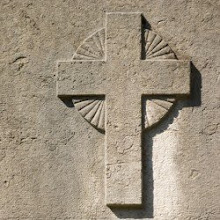General Sherman, after weeks of standoff because of Atlanta’s stiff defensive fortifications, opted to move the majority of his forces south and west of the city in a flanking move to cut off the two remaining rail lines into the city. The Atlanta & West Point Railroad line was cut on August 30, and the Macon & Western was cut just south of where I took the photo on August 31. A few miles further south, one of the most significant battles of the Civil War was fought at Jonesborough (now spelled Jonesboro). On September 1 the vastly outnumbered Confederate force was defeated, spelling the end of Atlanta’s resistance. Nearly 7,000 Confederate and Union soldiers were killed. That evening, Confederate General John Bell Hood ordered the evacuation of Atlanta, which was occupied by Sherman the next day. While much of Hood’s Army of Tennessee, led by Hardee, was able to escape, they were no longer able to stop General Sherman’s famous march to the sea. The Confederacy was dealt a severe blow.
 |
| Union General William Tecumseh Sherman |
You romanticists will remember the famous burning building scene in the movie Gone with the Wind as Rhett and Scarlett flee Atlanta. This scene takes place on August 31, 1864. Rhett decides to join the cause against the Yankees, leaving Scarlett to fend for herself with the memorable and apt words “God help the Yankees if they should get you.” Scarlett must slip past the Union forces located in the area of Rough and Ready (now called Mountain View) and Jonesborough to make it back to the family plantation, Tara. The book is historically accurate at this point. You can read this particular part of the dialogue here. You can also read about the background, and the interesting twists and turns of the Battle of Jonesborough, that helped seal the fate of the Confederacy, from an excerpt of William R. Scaife’s book The Campaign for Atlanta here. The area around Jonesboro and its history was one of the inspirations for Margaret Mitchell’s Gone with the Wind. There are still several antebellum homes in the area, as well as a couple of Confederate cemeteries – the final resting place for those Confederate soldiers who fought and died in the Battle of Jonesborough.











No comments:
Post a Comment